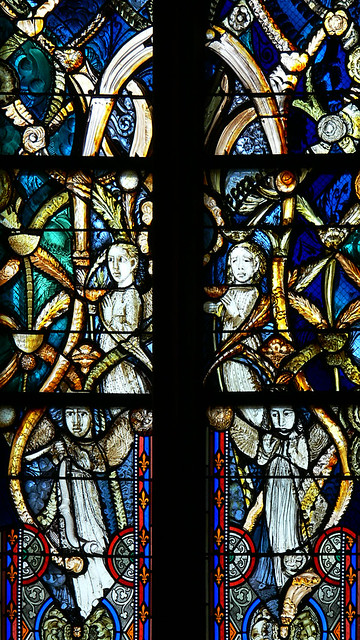Carron, Pierre
Submitted by walwyn
Pierre Carron (1932–2022) was a French painter, sculptor, and stained-glass artist whose work bridges the traditions of classical figurative painting and monumental sacred art. Born in Fécamp, Normandy, he studied at the École régionale des Beaux-Arts in Le Havre and the École nationale supérieure des arts décoratifs in Paris before entering the École des Beaux-Arts in 1951 under Raymond Legueult. Carron quickly established himself as one of France’s most gifted young artists, winning the Prix de la Critique in 1957 and the Grand Prix de Rome in 1960. His stay at the Villa Médicis from 1961 to 1964 brought him into contact with the painter and director Balthus, who became both a friend and an influence.
After returning to Paris, Carron joined the faculty of the École des Beaux-Arts, where he taught for three decades and shaped a generation of French artists. In 1990, he was elected to the Académie des Beaux-Arts, a recognition of his contribution to the French artistic tradition.
Although Carron is best known as a painter, his interest in large-scale, spiritually charged works led him to explore stained glass later in his career. His stained-glass windows for the Cathédrale d’Orléans and the Cathédrale de Meaux stand among his most important achievements. These works show his ability to translate his calm, figurative vision—so characteristic of his canvases—into light and colour. Like his paintings, the glass compositions evoke themes of childhood, nature, and contemplation, rendered with a luminous sensitivity reminiscent of Piero della Francesca or Ingres.
Carron’s art is rooted in tradition yet touched by modern sensibility. His stained-glass commissions demonstrate how an artist steeped in easel painting could engage successfully with architecture and sacred space. The windows of Orléans and Meaux reveal a harmony of form and spirit, a dialogue between centuries-old craftsmanship and contemporary artistic language. Through these works, Carron extended the reach of figurative art into the realm of the monumental and the divine, leaving a legacy that endures both in galleries and in the glowing light of France’s cathedrals.
